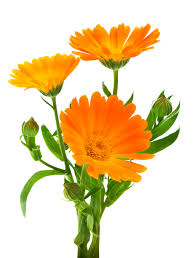 The garden magazines are touting new plants right now, which is standard for January editions. In the midst of all that New Year’s newness, I was pleased to see a garden pundit extol the virtues of something old-fashioned—the use of annuals in garden beds and borders. Jimmy Turner, Executive Director of the Red Butte Garden in Salt Lake City, Utah, talked about annuals in an interview published in Horticulture. Turner loves to use potted annuals “dispersed here and there in the garden,” and refers to the colorful plants as “the throw pillows of the plant world.”
The garden magazines are touting new plants right now, which is standard for January editions. In the midst of all that New Year’s newness, I was pleased to see a garden pundit extol the virtues of something old-fashioned—the use of annuals in garden beds and borders. Jimmy Turner, Executive Director of the Red Butte Garden in Salt Lake City, Utah, talked about annuals in an interview published in Horticulture. Turner loves to use potted annuals “dispersed here and there in the garden,” and refers to the colorful plants as “the throw pillows of the plant world.”
That got me thinking about how I could use those “throw pillows” to liven up my garden this coming spring, summer and fall. While considering the options and paging through catalogs, my eyes lit on a lovely pot marigold, or Calendula officinalis. While not a true marigold, like the yellow, gold or white varieties of Tagetes that are more common in gardens, it is a beautiful plant in its own right. Traditionally used in herbal preparations and fabric dying, it edible for humans, avoided by deer and amenable to pot culture. It sounds like a good “throw pillow” to me.
I decided to check into available pot marigolds.
If you are not familiar with the species, a pot marigold flower looks a little like a mum, or possibly an exploded daisy. The traditional colors are yellow and orange, but breeders have expanded that range significantly. The plants grow one to two feet tall and equally wide, with abundant flowers throughout the growing season. Though the elongated green leaves are not particularly elegant or notable, they are un-objectionable. The flowers are clearly the stars in the calendula firmament.
As I started to go through online and print catalogs, I discovered that anyone who wants a calendula will be spoiled for choice—at least if that individual is willing to grow from seed. You can buy heirloom varieties like ‘Orange King’ from the 1920’s, or newer improvements on traditionally colored flowers, such as the flashy”Neon’, also an orange bloomer.
For a pot marigold that looks like a white sunflower made smaller, try ‘Snow Princess’ or ‘Ivory Princess’, both of which have large dark centers like sunflowers. The ‘Pacific Beauties Mix’ feature blooms with a similar sunflower-y look, except in shades of orange and yellow.
Any time breeders try their hands at expanding the color range of orange or yellow flowers, they always come up with peach. The catalog listings are full of peach varieties, including ‘Pink Surprise’, which tones to darker peach at the center; or ‘Kinglet Apricot’ with crested or rolled petals in pale peach. ‘Zeolights’ features peach petals that shade closer to primrose at the center and are adorned with red tips.
Fortunately the new calendula colors mix well, so if you want something vibrant, try one of the available mixes. Calendula ‘Cantaloupe’ is actually a mix of colors in the cream/yellow/apricot range, with relatively small, dark centers. The ‘Solar Flashback Mix’ contains a range of similar colors, with the added attraction of red-flared petal reverses.
Sometimes you just need the prospect of something a little wild and crazy to keep you going until the growing season starts. For some that may mean doing handsprings across the frozen January lawn, but for those of us with less ambition or balance, there is Calendula ‘Strawberry Blonde’, which grabs attention with vivid green centers surrounded by gold rings and edged with a red band. The slender petals are scarlet on the reverse. ‘Calexis Orange’ is a compact variety that looks as if someone stuck the stem in an electrical outlet. It is bold, to say the least. ‘Oopsy Daisy’ boasts yellow centers in the midst of primrose to yellow petals that are edged in amber.
Like many annuals, pot marigolds are relatively easy to grow. The seeds are large enough to handle easily—unlike the microscopic seeds of annual poppies. They can be started indoors six to eight weeks before the last frost date for your area, or direct-sown in pots when the weather warms up. Use a good potting mix either way and water regularly. Once the plants are up and blooming, pinch the shoots to encourage branching and fullness and deadhead the spent blooms to persuade the pot marigold to continue fulfilling the biological imperative by producing more.
I am ordering my seeds now to avoid disappointment later. After I get the order in, I’ll see about stealing a greenhouse, as my indoor seed-starting space is limited. Good suppliers include Select Seeds, 180 Stickney Hill Road, Union, CT 06076; (800) 684-0395; www.slectseeds.com. Free paper catalog. Baker Creek also has an interesting selection. Find them at 2278 Baker Creek Road, Mansfield, MO 63704; www.rareseeds.com. Paper catalog available.
If seed starting does not appeal to you or felony greenhouse theft is not in the cards, you will also be able to find traditional orange and yellow varieties in garden centers when spring arrives.
